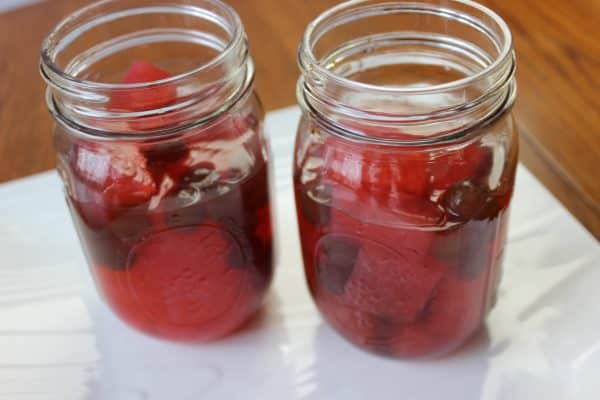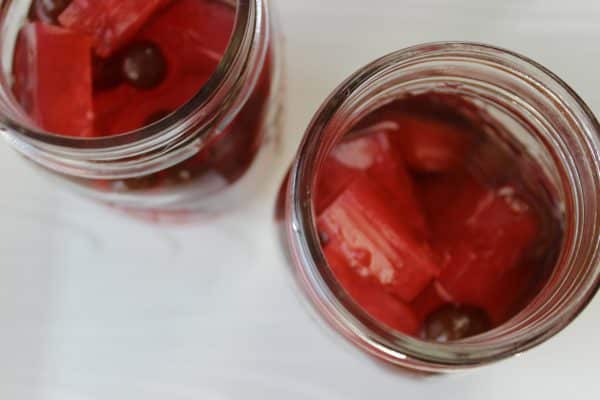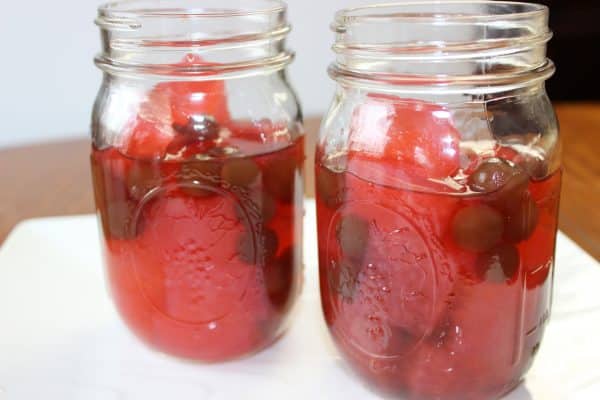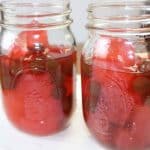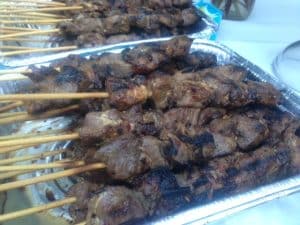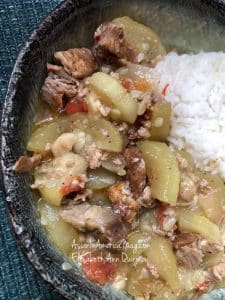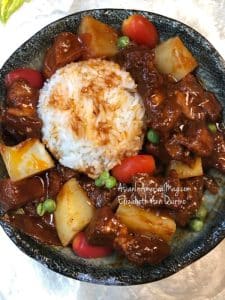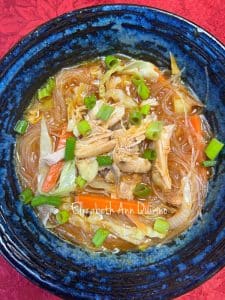Sago and Gulaman
As an Amazon Associate and member of other affiliate programs, I earn from qualifying purchases.
One of the most refreshing Filipino beverages is a tall, chilled glass of Sago and Gulaman. In my travels to the Philippines, I often order this drink to go with my Filipino meals at restaurants. It is widely available. And like all things we enjoy when we eat out, I try to recreate a drink or a dish at home.
Sago (say “sah-goh”) are small, round starchy balls extracted from the spongy center of tropical palm stems. When uncooked, they are pea-sized white balls. After boiling and simmering the sago in water, they turn into transparent balls with a gummy texture. Aside from its wide use for Philippine beverages and desserts, sago balls are a staple in New Guinea and the Moluccas and in Indian cuisine.
Sago should not be confused with tapioca, although they look similar. Tapioca comes from cassava, while sago is from palm trees.
Gulaman (say “gooh-lah-man”) is known as agar-agar and is the Filipino counterpart of gelatin. Filipinos are familiar with gulaman as a solid, foot-long bar of dried seaweed used in desserts which need gelatin. Gulaman bars are either colored or plain (transparent white). When cooked gulaman can be bland-tasting so I sweeten it with sugar. For this recipe, I used red gulaman bars. During the holidays, I use a combination of red and green for a festive look.
If you’ve never had Sago and Gulaman before, here’s the best way to enjoy it. Plunge a long spoon into a tall, parfait glass of this chilled beverage. Dig in and take out a spoonful of the silky gulaman cubes, savor the gummy-like texture of the sago and sip the sweet syrup made from brown sugar with hints of banana flavoring. If desired, add more crushed ice to the top of the beverage and have a thoroughly refreshing experience.
Sago and Gulaman
Ingredients
- 2 whole gulaman (agar-agar) bars colored or white-colored
- 3 cups water for cooking gulaman
- 2 to 3 cups cooked sago bottled in syrup
- 1 cup brown sugar
- 3 cups water for syrup
- 1 teaspoon banana flavor extract
- 1/2 cup for each glass crushed ice
Instructions
- Prepare two tall or parfait glasses about 10 to 12 oz. each. Set aside.
- In a deep rectangular pan, pre-soak the gulaman bars in the 3 cups of water for 30 minutes till soft.
- Over medium high heat, in a mid-sized stock pot, pour the water used in soaking. It should be 3 cups. Cover and bring to a boil. When water boils, add the gulaman in shredded pieces. Cook till the gulaman dissolves and liquid is smooth. This should take about 5 minutes. Transfer the gulaman liquid to a glass or metal bowl. Let this cool.
- Separately, mix together the brown sugar, banana flavoring and 3 cups water in a small saucepan. Bring this to a boil. The liquid will become a thick, golden brown syrup. Set aside to cool.
- When gulaman has cooled, cut this up into 1-inch cubes.
- In tall, clear glasses put the gulaman. Add the sago balls. Distribute the amounts evenly among 2 to 4 glasses. Pour the cooled syrup over the sago and gulaman. Mix well. Serve with crushed ice on the top.
- To cook regular uncooked sago: If you prefer to buy uncooked sago, soak 1 cup sago pearls in a bowl of water for 6 hours or overnight. Drain the water. In a medium-sized stockpot, combine the sago pearls with 8 cups of water and ½ cup sugar. Cover and boil for 35 minutes or until the pearls are tender and transparent; there should be no trace of white anywhere in the sago pearl. Keep checking the water level and maintain the same level covering the sago.To know if they are cooked, the sago pearls should be completely transparent-looking. When done, discard the water used for boiling. Refrigerate the cooked sago till ready to use. When chilled, the cooked sago may clump together. They can be separated by stirring with the syrup.
- COOK'S COMMENTS: I purchase cooked bottled sago and the uncooked sago from Asian markets, Filipino groceries or online sources of Filipino or Asian ingredients.
- Hello, Friends! All the images and content on this blog are COPYRIGHT PROTECTED and owned by my media company Besa-Quirino LLC. This means BY LAW you are NOT allowed to copy, scrape, lift, frame, plagiarize or use my photos and recipe content I wrote, on your website, films or videos without my permission. If you want to republish this recipe or content on another website, video or news article, please ASK my permission, re-write it in your own words and simply link back to this blog to give proper attribution. It’s the legal thing to do. Thank you. Email me at [email protected]
Nutrition
Notes on Nutrition: The nutrition information provided is an estimate and will vary based on cooking methods and specific brands of ingredients used.
Did you like this recipe? I have more classic recipes inspired by my late mother’s cooking in my popular cookbook: My Mother’s Philippine Recipes. If you’re learning how to cook Filipino food or a fan of Philippine cuisine, buy my cookbooks and books on Amazon.com sold worldwide in paperback and Kindle format.
Hello, Friends! Please DO NOT LIFT OR PLAGIARIZE my original recipe, stories, photos or videos. All the images and content on this blog are COPYRIGHT PROTECTED and owned by my media company Besa-Quirino LLC. This means BY LAW you are NOT allowed to copy, scrape, lift, frame, plagiarize or use my photos, essays, stories and recipe content on your websites, books, films, television shows, videos, without my permission. If you wish to republish this recipe or content on media outlets mentioned above, please ASK MY PERMISSION, or re-write it in your own words and link back to my blog AsianInAmericaMag.com to give proper attribution. It is the legal thing to do. Thank you. Email me at [email protected]

